Thingiverse
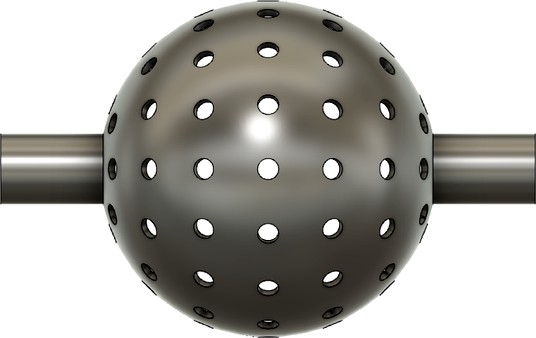
UV-Light Water Disinfection Chamber by Anenome
by Thingiverse
Last crawled date: 4 years, 1 month ago
The basic idea here is to create a cheap water disinfection device using UV-C light.
Water goes in one side of the tube and exits the other, being bombarded with intense UV light while inside the UV-light disinfection chamber. With a slow enough flow rate or repeated passes, this will kill just about anything in the water.
The ball chamber is 6" in diameter. Ideally, the sterilization chamber would be made from a metal reflective material like stainless-steel or polished aluminum, but plastic is fine too.
The pipe ends are standard Schedule-40 1" pipe, ready to be threaded to accept standard pipe-connectors.
There are 88 evenly spaced holes designed to accept a 10mm UV LED; these can be epoxied in place, and wired electrically. The water should be clean, filtered, without particles of dirt or mud in them which can shield micro-organisms, bacteria, and viruses from the light.
UV radiation kills most organisms when the wavelength is about 265 nanometers because that is the wavelength at which DNA maximally absorbs UV light, destroying their DNA and rendering the micro-organism unable to reproduce or carry on normal cell function, after which they die.
https://en.wikipedia.org/wiki/Ultraviolet_germicidal_irradiation
Once wired electrically, cover the back so that you are not exposed to LED, the light disinfects because it is harmful to living things, including you! Please consult LED Center for info on wiring them up: http://led.linear1.org
It can be hard to find through-hole LEDs in the 10mm size (which is actually quite large) in the correct nanometer range. I leave this to you.
Should you find smaller LEDs in the 5mm size, I have included two more versions. One with 88 x 5mm holes, and one with 108 x 5mm holes.
Here is one possible source on Alibab, but they appear to be 5mm LEDs:
https://www.alibaba.com/product-detail/Hot-sell-5MM-Round-LED-Dip_62095385200.html?spm=a2700.7724857.normalList.85.193d8651cFa31Q
If someone can find a cheap and quality source of UV-C 265nm LEDs in another shape or size, I could rebuild this device to take advantage of that form-factor instead. Like we could use a square or diamond-shaped chamber with perhaps larger UV-C LEDs in a square form-factor.
Since these do not require power and are not very expensive, this could be a good way to disinfect water in many parts of the world as a last-line of defense rather than using boiling, which is very energy intensive. But this will not remove heavy metals or chemicals, it only kills micro-organisms like parasites, viruses, and bacteria.
I am not sure how long it would take to actually disinfect water with this device. It depends on light intensity and the exposure time. But because this does not require much energy to use, you can circulate water through the device with a small pump continuously over a period of time and be reasonably sure your water is disinfected, especially if you are using the correct 265 nm UV-C LED lights.
Your other option is to gravity feed from a questionable source at a very slow rate into this device, then slowly drip-feed out of it, so that the water in it all spends a considerably amount of time in the UV-chamber before it is able to drip out the bottom of the chamber. This would be an efficient way to use this device, but makes water available more slowly and requires a 2nd catch basin.
And, as always, this design includes a public-domain dedication, free for use by all. Enjoy. And if you print this and plan to use it, please let us know and show it off!
Water goes in one side of the tube and exits the other, being bombarded with intense UV light while inside the UV-light disinfection chamber. With a slow enough flow rate or repeated passes, this will kill just about anything in the water.
The ball chamber is 6" in diameter. Ideally, the sterilization chamber would be made from a metal reflective material like stainless-steel or polished aluminum, but plastic is fine too.
The pipe ends are standard Schedule-40 1" pipe, ready to be threaded to accept standard pipe-connectors.
There are 88 evenly spaced holes designed to accept a 10mm UV LED; these can be epoxied in place, and wired electrically. The water should be clean, filtered, without particles of dirt or mud in them which can shield micro-organisms, bacteria, and viruses from the light.
UV radiation kills most organisms when the wavelength is about 265 nanometers because that is the wavelength at which DNA maximally absorbs UV light, destroying their DNA and rendering the micro-organism unable to reproduce or carry on normal cell function, after which they die.
https://en.wikipedia.org/wiki/Ultraviolet_germicidal_irradiation
Once wired electrically, cover the back so that you are not exposed to LED, the light disinfects because it is harmful to living things, including you! Please consult LED Center for info on wiring them up: http://led.linear1.org
It can be hard to find through-hole LEDs in the 10mm size (which is actually quite large) in the correct nanometer range. I leave this to you.
Should you find smaller LEDs in the 5mm size, I have included two more versions. One with 88 x 5mm holes, and one with 108 x 5mm holes.
Here is one possible source on Alibab, but they appear to be 5mm LEDs:
https://www.alibaba.com/product-detail/Hot-sell-5MM-Round-LED-Dip_62095385200.html?spm=a2700.7724857.normalList.85.193d8651cFa31Q
If someone can find a cheap and quality source of UV-C 265nm LEDs in another shape or size, I could rebuild this device to take advantage of that form-factor instead. Like we could use a square or diamond-shaped chamber with perhaps larger UV-C LEDs in a square form-factor.
Since these do not require power and are not very expensive, this could be a good way to disinfect water in many parts of the world as a last-line of defense rather than using boiling, which is very energy intensive. But this will not remove heavy metals or chemicals, it only kills micro-organisms like parasites, viruses, and bacteria.
I am not sure how long it would take to actually disinfect water with this device. It depends on light intensity and the exposure time. But because this does not require much energy to use, you can circulate water through the device with a small pump continuously over a period of time and be reasonably sure your water is disinfected, especially if you are using the correct 265 nm UV-C LED lights.
Your other option is to gravity feed from a questionable source at a very slow rate into this device, then slowly drip-feed out of it, so that the water in it all spends a considerably amount of time in the UV-chamber before it is able to drip out the bottom of the chamber. This would be an efficient way to use this device, but makes water available more slowly and requires a 2nd catch basin.
And, as always, this design includes a public-domain dedication, free for use by all. Enjoy. And if you print this and plan to use it, please let us know and show it off!
Similar models
thingiverse
free

UV Stelizer
...rom covid-19 i created from spare uv leds lamp for sterilization of facemasks and hand devices.
uv light is able to kill viruses
thingiverse
free
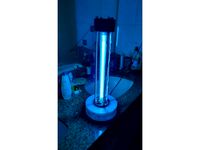
UV-C disinfection light by rj3005
...with the larger hole and use some cotton/cardboard or whatever to fill the gap between the spacer and tube.
stay safe everyone !!
thingiverse
free

5mm LED clip by Menneset
...lds a 5mm led close to a surface. not the prettiest thing ever, but it is designed to be used for indirect light or backlighting.
thingiverse
free

Circular led light by fotoianmontes
...
i've used:
9 5mm uv leds 3'4v 20ma
5v power supply
18 ohm 1/4w resistor
working fine at 0.2mm layer eight and 25% infill
thingiverse
free

P905 or 905X Light Bar by jbrasel
...les that are 5mm apart on a p905 or p905x. do your own wiring, but it uses 5mm led's. cable management to help keep it clean!
thingiverse
free

Adafruit Light Sensor TSL2561 Housing by SwerveRobots
...wiring them in parallel with a 100 ohm resistor attached to each to compensate different amounts of light emitting from each led.
thingiverse
free

3Dsets Jeep Rancher 4x4 Light with hole for 5mm led by xBenny
...3dsets jeep rancher 4x4 light with hole for 5mm led by xbenny
thingiverse
3dsets jeep rancher 4x4 light with hole for 5mm led
thingiverse
free

Water dropper by Sondreskarsten
...t prototype of device which drops water from chamber one to chamber 2, with room for sepper motor.
not ready for general usage
thingiverse
free

CityStar platform by upfront_raver
...n use small pliers and carefully push it into place. it is even possible to solder the connector to the wires after installation.
thingiverse
free

Led worklight by 3DPingu
...led worklight by 3dpingu
thingiverse
you can not get too much light around the printer =)
holes for 5mm leds.
Anenome
thingiverse
free

Anenome Bin Arm Bracket by groundmonkey
...bracket by groundmonkey
thingiverse
this is a bracket for a bin i've designed which expands and contracts to fit any bin bag
thingiverse
free

Schmidt Coupling by Anenome
...shaft couplings are a very interesting and difficult problem, dealing with issues of misalignment in many different axes at once.
thingiverse
free

Precision Screwless Vise by Anenome
...ho was nice enough to put plans out on the net for everyone.
i've been wanting to model it for awhile, found some time today.
thingiverse
free

Face-Centered Cubic Model by Anenome
... a 2" x 2" cube. i've joined the tangent surfaces of the spheres just enough that it should be mechanically-stable.
thingiverse
free

Object of Constant Width - Acorn by Anenome
...rings, although it looks like it couldn't possibly.
here's a video of how they work:
https://i.imgur.com/ypw7cej.gifv
thingiverse
free

Flexible Shaft Coupler .250" (XY-style) by Anenome
... an xy arrangement. this arrangement will transmit torque without the problem of coiling up like the spring-style shaft couplers.
thingiverse
free

Object of Constant Width - Tetrahedron by Anenome
... https://i.imgur.com/ypw7cej.gifv
inspired by the book "how round is your circle" by john bryant & chris sangwin.
thingiverse
free

2-Part Epoxy Mixing Tube by Anenome
...n half 20 times and you've divided the flow a million times.
use this as a model for anything you need to mix up really well.
thingiverse
free
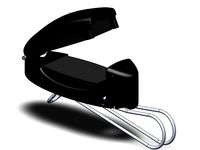
Sunglasses Clip by Anenome
...ate.
here's an example of this kind of clip that you might find in any corner gas-station:
http://i.imgur.com/n5hzvmp.png
thingiverse
free

Japanese Sashimono Large Beam Joinery by Anenome
...hown.
i wouldn't recommend printing this out, it's quite large! but it could be used as a guide, or printed in miniature.
Disinfection
thingiverse
free

Drip tray for disinfectant dispenser
...drip tray for disinfectant dispenser
thingiverse
stop your disinfectant dispenser from dripping on the floor :-)
thingiverse
free

Disinfectant Hanger by PolyGurl
...er for the common 4" sized disinfecting wipes from lysol and clorox. there is also a large version for the 5" canister.
thingiverse
free
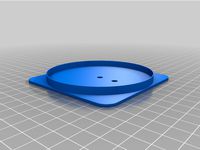
disinfectant dispenser by Selimtcr
...disinfectant dispenser by selimtcr
thingiverse
this is for 3d printing
thingiverse
free

Sensor Disinfectant Device - Sensörlü Dezenfektan Cihazı by Oyunadevam
...device - sensörlü dezenfektan cihazı by oyunadevam
thingiverse
sensörlü dezenfektan cihazı için parça
sensor disinfectant device
thingiverse
free

Isopropyl Alcohol Disinfectant Measuring Cup by jumdar
...ler volume with 99% isopropyl alcohol and fill the larger volume to the same height with water.
total max volume is about 210 ml.
thingiverse
free

disinfectant dispenser by limalima
...rayheads that have a shorter handle. additionally it has a window to spare material and give you a nice view on the desinfectant.
thingiverse
free

Disinfectant wipe container holder by intoxikated
...ed
thingiverse
just a holder that can hold lysol wipes or other round wipe dispensers. fits up to 5.5" diameter containers.
thingiverse
free

Disinfectant Wipe Holder by Desodorien
...;t go anywehre else than it should be.
this the first design i share here, so comments are very welcome for me to improve myself
thingiverse
free

Ozone generator to disinfect the air
... contaminating microorganisms present in the air ... and this without forgetting its effectiveness to eliminate unpleasant odors.
thingiverse
free

Disinfectant shield for Humphrey Visual Field Analyzers (HFA, HFAII) by blemanski
...: we will not be liable for consequential, incidental, special, exemplary damages or otherwise arising out of use of this device.
Uv
thingiverse
free

UV Scanner
...
a uv scanner for a cyborg outfit.
instructions: http://projecttimbo.blogspot.com/2019/11/cyborg-chest-piece-and-uv-scanner.html
thingiverse
free

UV Stelizer
...rom covid-19 i created from spare uv leds lamp for sterilization of facemasks and hand devices.
uv light is able to kill viruses
thingiverse
free

Bracket for Pura UV UV purifier by akdenyer
...bracket for pura uv uv purifier by akdenyer
thingiverse
bracket for pura water purifier
thingiverse
free

UV box by hlmjjj1994
...uv box by hlmjjj1994
thingiverse
uv box for sla parts
thingiverse
free

UV Curing Station
...uv curing station
thingiverse
uv curing station for resin printers!!
thingiverse
free
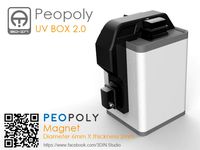
UV BOX 2.0
...uv box 2.0
thingiverse
uv box 2.0
needs a large fdm printer
thingiverse
free

UV-Reflectometer by wojczy
...struction materials and coatings under application conditions
full documentation under https://github.com/wojczy/uv-reflectometer
thingiverse
free
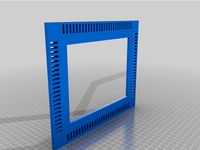
UV Light Curing Box for Large UV lamp
...yjmvuy3j5chrlzefkswq9qta2otm2mtkznfvzwtjom1awuzywjndpzgdlde5hbwu9c3bfyxrmjmfjdglvbj1jbglja1jlzglyzwn0jmrvtm90tg9nq2xpy2s9dhj1zq==
thingiverse
free
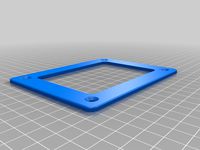
Support for UV Light
... uv light from amazon, i used it to build a uv curing chamber - you could screw the lamp on to a plastic storing box or a carton.
thingiverse
free
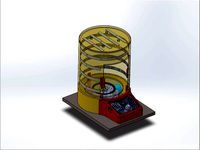
cure-uv by buho29
...cure-uv by buho29
thingiverse
https://github.com/buho29/cure-uv
https://www.youtube.com/watch?v=orlp6moraws
Chamber
thingiverse
free

Chamber Flag
...chamber flag
thingiverse
chamber flag
thingiverse
free

Chamber by xijin
...chamber by xijin
thingiverse
this is a simpler recording chamber
thingiverse
free
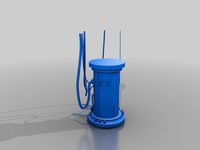
servitor incubation chamber
...servitor incubation chamber
thingiverse
servitor incubation chamber
thingiverse
free

spim chamber
...
light-sheet microscopy chamber design using a 3d printed part and perspex. broadly functional with homemade light-sheet designs.
thingiverse
free

Stasis Chamber by 6eyecat
...stasis chamber by 6eyecat
thingiverse
sci-fi stasis chamber for 28mm gaming.
thingiverse
free

Internal Chamber
...internal chamber
thingiverse
https://glasslung.com/
thingiverse
free
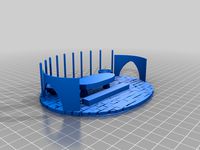
Sacrificial Chamber
...sacrificial chamber
thingiverse
for gaming and modeling
thingiverse
free

CCFR Chamber Flag
...ccfr chamber flag
thingiverse
chamber flag with the ccfr logo on it
all rights reserved
thingiverse
free

four chamber whistle
...four chamber whistle
thingiverse
this is just another whistle, but, this one, with four different sized chambers
thingiverse
free

Chamber Flag by Midvale1955
...chamber flag by midvale1955
thingiverse
quick printing chamber flag that i use on a 9mm pistol.
Water
thingiverse
free

Water Bottle Waterer by timthebarbarian2
... ring on the bottle.
great for cats, small dogs, chicks, ducklings, and small pets. it's small enough to fit in your pocket.
thingiverse
free

Watering spike for soda/water bottle by lucibrandus
...watering spike for soda/water bottle by lucibrandus
thingiverse
watering spike for soda/water bottle.
thingiverse
free
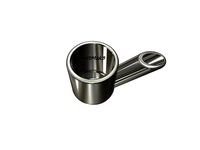
Water-Fountain / Water Dispenser by Ju5tMak3
...water-fountain / water dispenser by ju5tmak3
thingiverse
water tap fountain / dispenser
fits on diameter 23,90mm
have fun
thingiverse
free

Watering Can
...watering can
thingiverse
enjoy watering your plants :-)
thingiverse
free

water weird
...water weird
thingiverse
quick simple water weird snake
thingiverse
free

Water by WillandMrData2
...water by willandmrdata2
thingiverse
water.
the wet stuff,, people drink of course,,
thingiverse
free

Water Sump
...water sump
thingiverse
succhiarola per sentina
water sump for boat bilge
thingiverse
free
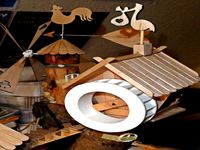
Water wheel
...water wheel
thingiverse
65 mm outer diameter water wheel, for watermill modell.
thingiverse
free

Water Guard by sakai
...water guard by sakai
thingiverse
water guard against water drop
thingiverse
free

Water drone
...water drone
thingiverse
this is a water drone made with 3d printed parts and two plastic bottles
Light
thingiverse
free

Light Bulb Light by rubyrox544
...light bulb light by rubyrox544
thingiverse
it is a light that uses a led light which can light up a room.
thingiverse
free

Night-light Tap-light by mrAkuaku
...p-light night-light/mood-light
here's a link to that project.http://www.instructables.com/id/beautiful-tap-light-night-light/
thingiverse
free

Bike Light
...bike light
thingiverse
bike light
thingiverse
free
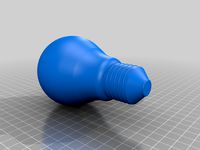
Light Bulb
...light bulb
thingiverse
light bulb
thingiverse
free

Snowman light
...snowman light
thingiverse
snowman light
thingiverse
free

minecraft light
...minecraft light
thingiverse
minecraft light
thingiverse
free

USB Stick Light (night light) by northriver
...t light) by northriver
thingiverse
a 3d printed cover for a usb light stick.
it could be used as a night light or reading light?
thingiverse
free

Road Light, Street Light by silvanus321
...road light, street light by silvanus321
thingiverse
use the hair dryer to curve the pole.
print in 120% to fit the led light.
thingiverse
free

Mag Light Task light by khiebert
...mag light task light by khiebert
thingiverse
articulated arm for mini mag-light for those jobs that require three hands
thingiverse
free

Light shade for can lights by JustinSpanier
...he light from reflecting off of the tv. two of these per light seems to do the trick. i just used tape to attach them together.
